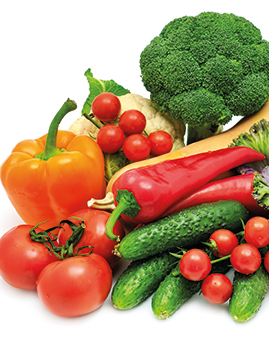
Rude Food
Protein Power
Vegetable sources of protein are nutritious and tasty – you just have to know what to look for
Why go vegetarian?
“Many’s the teenager has made an ethical choice out of humanitarian considerations,” says Jill Bell of Well and Good in Midleton, Co Cork. “Some people just feel better with little or no meat in their diet, and who can argue with the merits of avoiding the overuse of antibiotics in animal feed, and the abuses which have led to scandals such as BSE and contaminated imported chicken. Speaking environmentally, it takes up to 10kg of vegetable protein and 100,000 litres of water to produce 1kg of meat. Just water your vegetable patch!”
“Too much animal protein creates acid in the body,” says Veronica O’Reilly of Healthy Habits, a raw food café, in Wicklow town, “which the body counteracts by taking calcium from our bones to alkalise it.”
Best meat-free proteins?
Niall Fennell of Nua Naturals: “Chia, hemp, quinoa, nuts and nut butters, spirulina and chlorella, rice, beans, chickpeas and tofu are all great sources of proteins.”
Jill Bell: “Dairy products, eggs and soya contain all eight essential amino acids, and other foods which don’t have them all can be mixed and matched to improve the combination. For instance, combining pulses such as beans and lentils with a wholegrain such as oats, rice, quinoa, millet or wheat does the job nicely. Beans on toasted wholemeal bread, brown rice and lentil curry, muesli with nuts and almond milk, brown pitta bread filled with hummus or peanut butter and salads all contain the full profile of amino acids.”
Grainne Dooley, nutritionist at Evolve Nutrition: “Quinoa and hemp. These are ‘complete’ sources of protein meaning they contain the full range of amino acids. Other, though not ‘complete’ sources include pulses, peas, beans and lentils. Combining these incomplete proteins with grains like brown rice, and wheat increase the amino acid profile to make them complete.”
According to Veronica O’Reilly sprouts of all kind contain 20-30% protein, 125g cooked quinoa contains 8g protein and 125g cooked buckwheat contains 6g protein.
Enough protein without meat?
“Yes, a person can easily get all their required amino acids (the building blocks of proteins) from meat-free sources with just a little understanding of where to get them,” says Niall Fennell of Nua Naturals. “Sources such as chia, hemp and quinoa are excellent sources of complete proteins and are great to use in meals. Some prominent nutrients that are present in meats include vitamin B12 which can be found in chlorella, saturated fats which can be found in coconut oil and creatine which, for the average person, can be created naturally by the body as long as it gets all its amino acids.”
“A wide variety of plant-based foods, including sprouts, nuts and seeds eaten over a week, will furnish the body with all the protein the body needs,” says Veronica O’Reilly. “The body works with the protein to create more protein.”
“Contrary to what steak-lovers believe there are plenty of sources of non-meat protein,” says Jill Bell. “The Harvard School of Public Health recommends plant-sourced protein over animal sources to reduce their chances of developing heart disease, some cancers and diabetes.”
Getting enough nutrients?
“Vegetarians should look at what other nutrients they might run short of which meat eaters have in plenty,” according to Jill Bell. “The main ones are iron and vitamin B12 which helps with iron absorption. Egg yolk, dried fruits, beetroot, sweet potatoes, peas, molasses, pumpkin and pumpkin seeds, wholegrains, nutritional yeast flakes and spirulina are high in iron. B12 is harder to find in non-meat foods, and if a veggie is feeling more tired than normal, a supplement might be in order. Iron intake may be on the low side, but vitamin C intake is likely to be high in a vegetarian diet where multi-coloured fruits and vegetables form an important ingredient of many dishes, and this maximises the absorption of iron.”
Meat-free Christmas?
Niall Fennell of Nua Naturals: “It’s not difficult at all, but it does help if you have a little support from the people you’re sharing Christmas with. A nut roast is my favourite option - my mother’s recipe is delicious.”
Veronica O’Reilly: “Planning is important. Decide what you want and go for it. I make a lovely nut casserole, which is dehydrated and served with cauliflower mash. Nut loaf is another choice.”
Tofu and tempeh explained
“Tofu, a staple food in China and Japan, is made from soya beans and is a complete source of protein,” says Jill Bell. “It is a very useful food for vegetarians, but it has one drawback - it is extremely bland. The good news is that there are a wide variety of flavoured tofu products in health store chillers –with hazelnuts, with basil, as sausages, smoked etc.
“Tempeh, found in healthstore freezers, is made from fermented soya beans. A staple food in Indonesia, it is more nutritious and more easily digested than tofu, with a more robust, nuttier flavour and it can be marinaded, steamed, grilled, fried, or crumbled into curries and casseroles.”
Click here to read other Rude Food articles.
Click here to return to the Rude Health Magazine homepage.